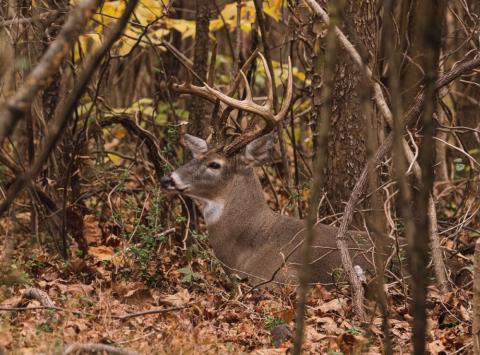Sam White, Editor-in-Chief of Marlin Magazine

Spotted seatrout, also called speckled trout or simply specks, are one of the top inshore species from Maryland to Florida and throughout the Gulf Coast to Texas. They’re a beautiful gamefish—often silver to golden bronze with a dappling of black spots—and while often aggressive, they can also be maddeningly frustrating to pattern and successfully catch during a day on the water. Sharp eyesight necessitates the use of light tackle, so a long-casting spinning rod loaded with light braided line followed by a top shot of fluorocarbon is the standard setup. They can be found in a very wide variety of environments, from the water’s surface to deep drop-offs and holes and virtually anywhere in between. Grass flats, sandbar edges, saltwater creek mouths, oyster bars—all are prime trout territory. And while they will readily hit a variety of artificial lures, when they turn finicky it’s time to pull out all the stops and turn to live bait. Here are the top six.
Live Shrimp

In regions where live shrimp is readily available, this is the bait which has undoubtedly produced more trout than any other. Shrimp are easy to keep alive during the day, needing only some water flow in either a livewell or simple bait bucket setup, and can be fished in a variety of ways. One of the best is beneath a lightly weighted popping cork or rattling float using a small 1/0 circle hook and a short length of light leader. Cast into likely areas such as oyster bars, points or creek mouths and gently pop or rattle the cork a few times, then pause. Shrimp can be hooked lightly through the tail or in the head to vary the presentation—just avoid the dark spot behind the eyes.
Finger Mullet
Matching the hatch is the name of the game when schools of small silver mullet invade the marshes and estuaries of the Southeast. Anglers will often see large trout at work as these schools of finger mullet suddenly explode into the air as an unseen adversary attacks from below, the sure sign of a prowling speck. These small, black-striped baitfish can also be fished in a variety of ways, including live-lined with no weight at all. Just watch for a trout to attack a nearby school, cast into the resulting swirl and hold on.
Croaker
Another live bait which is highly effective on big seatrout is the Atlantic croaker. A bottom-dwelling member of the drum family, these small baitfish can be readily cast-netted over grass flats inshore along the East Coast and in the Gulf of Mexico or caught on hook and line using small hooks and tidbits of shrimp or squid. They have the ability to vibrate their swim bladders to make a grunting or croaking sound, which can resonate for quite a distance underwater. Big trout know to home in on these sounds. They are best fished using a Carolina rig with a short length of fluorocarbon leader and a snelled circle hook, using just enough weight to keep the rig fishing along the bottom—cast along drop-offs, oyster bars or creek mouths and let the croaker’s built-in noisemaker do the rest.
Pigfish
Also called piggy perch in the Gulf and Texas coasts, pigfish are members of the grunt family. That namesake grunting noise they produce is like ringing the dinner bell for big trout; after all, who doesn’t love a live bait that comes with its own built-in sound attractant? Best fished on the bottom using a weighted Carolina rig setup, this is one that doesn’t require a lot of movement or action. Simply cast into a productive looking spot and let the pigfish do the rest.
Menhaden
In the late summer and early fall, especially along the coasts of North and South Carolina, schools of small menhaden can be found in the sounds and inshore estuaries. These finger-sized versions will soon grow to palm-sized adults, but at this stage they’re excellent forage for trout due to their high fat content. Fish looking to pack on the pounds for the coming winter will turn down other baitfish species for the opportunity to gorge on menhaden. They are somewhat fragile though and require a good recirculating livewell, and you’ll also need a cast net to harvest them, but the added trouble can be well worth the effort when targeting big trout late in the season.
Fiddler Crabs
While an unusual choice, trout do consume small crustaceans as part of their diet. This is especially true for those fish found around hard structures like rockpiles, jetties, docks and piers. Many an angler fishing for sheepshead in the winter using fiddler crabs has been pleasantly surprised by a big trout striking instead. Crabs are readily available for purchase in most bait shops and are also easy to keep alive, especially for shore-based anglers.
While there’s no doubt of the effectiveness of artificial lures for spotted seatrout, or the excitement of a topwater strike first thing in the morning, when things get slow it’s time to turn to live bait to get the job done on the water.






























